Churchill MkIV 75 / VI
At the beginning of 1943 it was expected that the Churchill production run would come to an end sometime in the summer after 3500 vehicles had been produced. Vauxhall were then to manufacture a version of the Cromwell, built to their own drawings. Vauxhall estimated that the transition to Cromwell production would not be complete until early 1944 and so suggested that an order for a further 500 Churchills should be placed in order to keep their production facilities fully employed during the changeover period. The War office duly placed the order but specified that as many as possible of the new order should be equipped with the new QF 75mm gun in a geared elevation mount. Production tanks built to this specification were designated Mk.VI.and it seems likely that around 250 or so were eventaully built. As a parallel excercise MkIII and Mk.IV tanks were also upgunned and designated Mk.III* and MkIV (75mm) respectively. The differences between the reworked tanks and the factory produced MkVIs are very subtle and mostly internal.
The subject vehicle for the following photo study was photographed outside the Bovington Tank Museum where it was for a while placed as a gate guardian. It is sadly no longer on public display at the museum. First impressions are that this is a Churchill MkIV but on closer inspection it is clear that this vehicle is armed with a 75mm gun rather than the expected 6-pounder and so represents aeither a MkIV 75mm, a MkVI or perhaps even a MkIXLT.
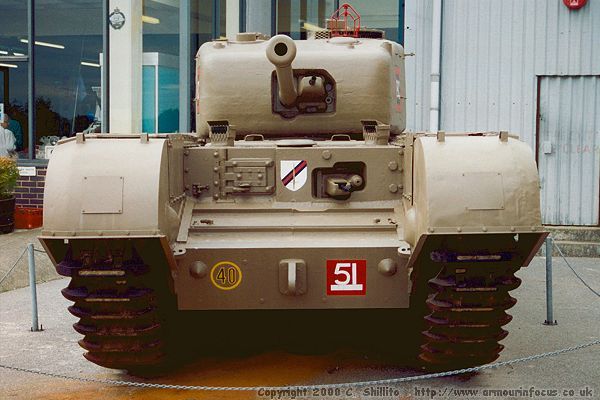
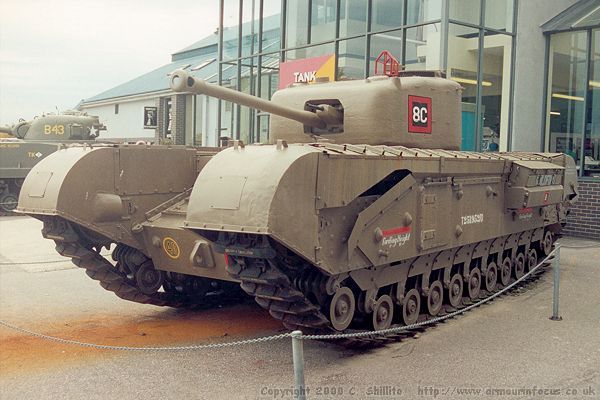
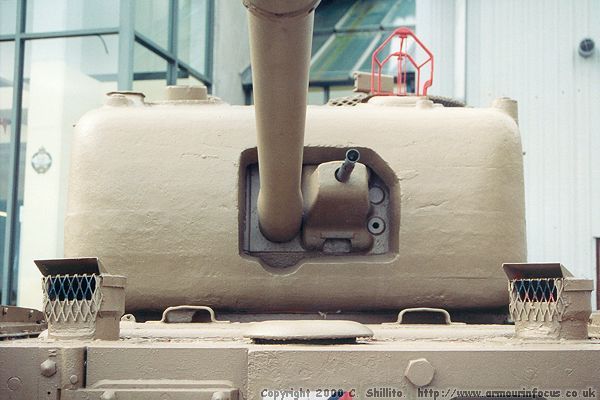
| Notice the shape of the mantlet and compare it with that of the Churchill MkVII. MkIVs only have one driver's periscope and the ventilator is mounted centrally. On the MkVII there are two driver's periscopes which necessitated moving the ventilator to slightly off centre. |
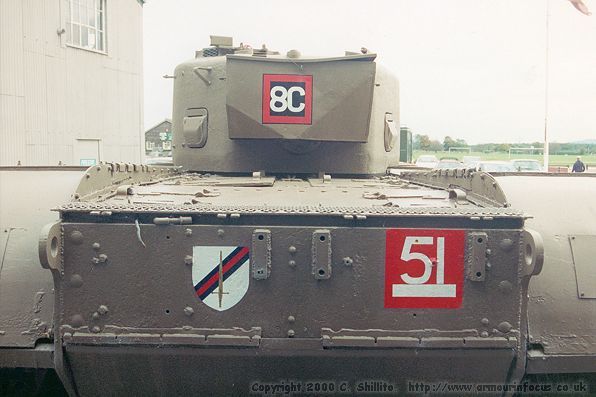
|
The arrangement of rivet and bolts at the rear tells us that this vehicle retains the original 5" air outlet. On most re-worked churchills this was increased to 8" by removing the internal ducting and moving the rear pate back slightly (see air outlet article). Note the asymmetrical structure of the rear stowage bin. Anyone know why ? |
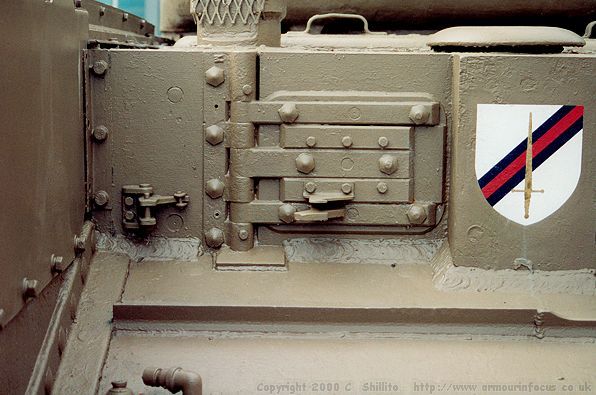
| If you look closely at the photos above and below you will notice that the protective surround for the driver's co-driver's hatches are rounded indicating they are cast. This form of surround was used on the early MkI and MkII chruchills being later replaced with a more rectangular bolted/welded arangement. |
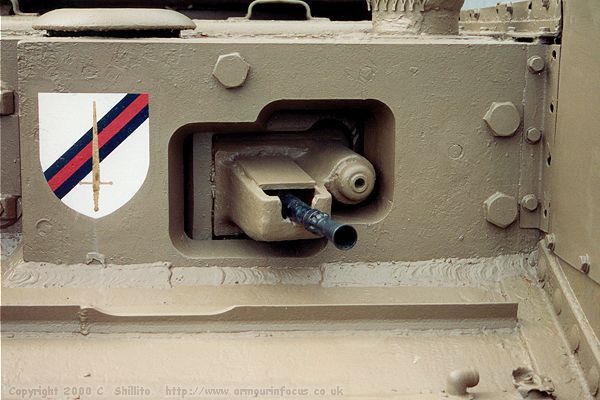
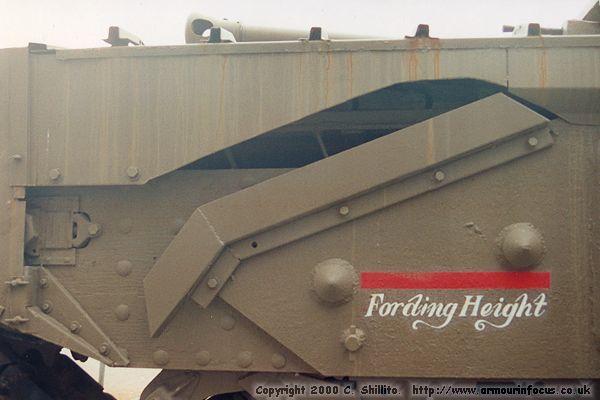
| Note the cone shape bolt covers. This indicates an early re-worked hull, later re-works are fiited with cone shaped nuts with two flats similar to those used on the Cromwell. (see armour bolt article) |
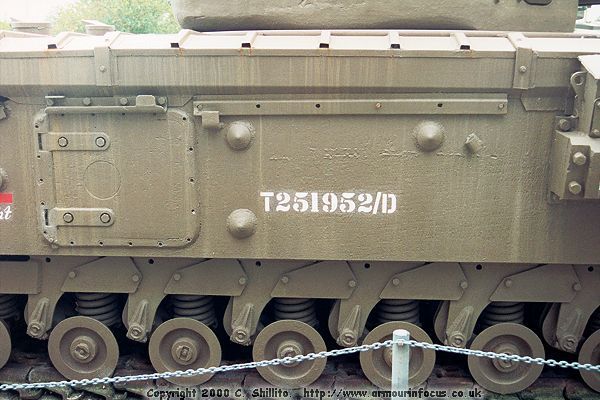
| Note the mounting holes for the door surround. On early churchills there are mounting points equally spaced all the way round. On later churchills the two holes on the rear most corners were deleted. |
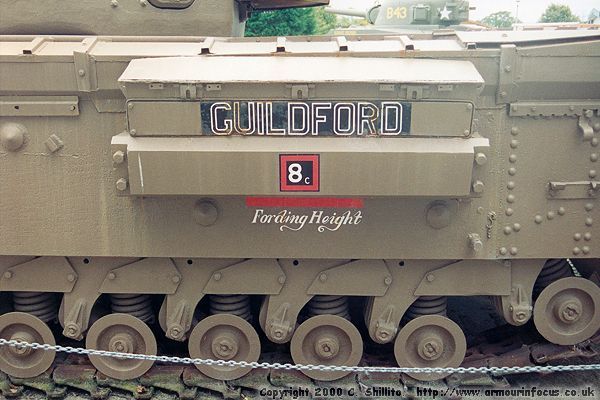
| The air intakes fitted are of the later MkVII type and not the type one would expect on a wartime MkIV or MkVI.. |
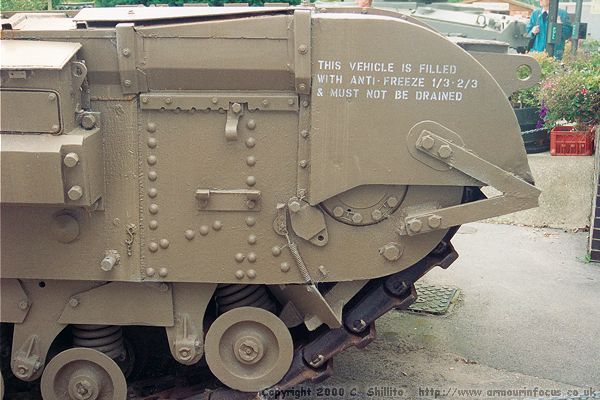
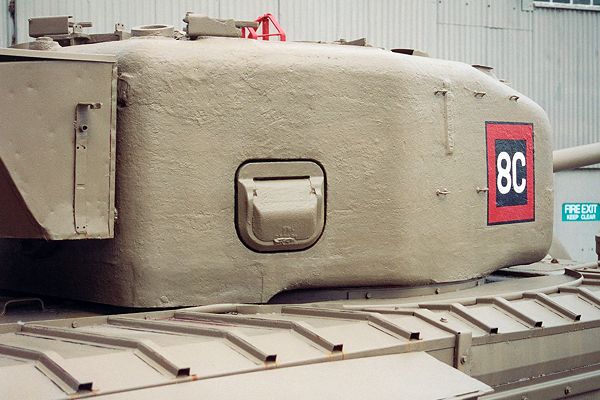
| Note the overhang at the rear of the turret. On early MkIVs there is evidence that this overhang incorporated a series of vents around the rear of the turret. Later turrets retained the overhang but lost the vents. The final form of cast turret removed the overhang all together the turret curving upwards at the rear and also incorporated a plate to protect the turret ring. (see turret types article) |
Discussion
This
vehicle is cerainly not a true MkVI, the cones on it's hull are typical
of an early re-worked MkIII or MkIV and would not have be found on a MkVI.
The pattern of mounting hole for the panier door surrounds and the cast
surrounds on the drivers/co-drivers hatches are all indicitive of a MkI/II
or very early MkIII. The turret style whilst not being the earliest form
of MkIV has the overhang at the rear which is not typical of the later
types used on MkVs and MkVIs. Some clasify this vehicle as a Mk.IXLT probably
due to it's possession of an All Round Vision cupola and strengthened
MkVII suspension. However we might expect that a Mk.IXLT would also have
aplique armour fiited to the hull sides. There exists some confusion over
the ARV cupola which are not pre-requisites for MkVIs. ARV cupolas were
an easy field modification for all Churchills during the latter part of
the war and certainly would have been fitted post war to any tanks still
in service.
©
1997, 1999 Chris Shillito